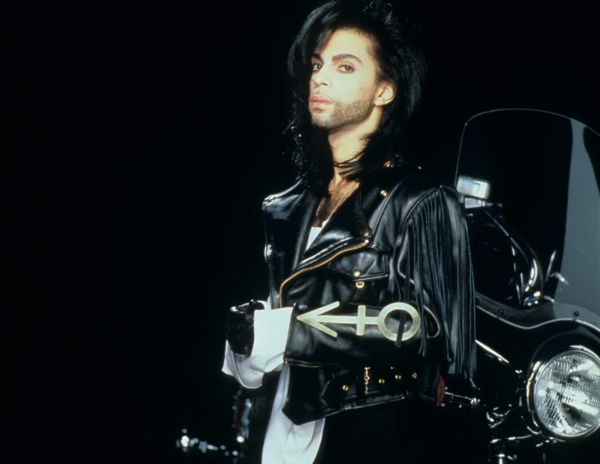
Movie reflection by Greg Carlson
“Graffiti Bridge,” Prince’s final theatrical film as director and onscreen performer, was the sequel to “Purple Rain” that nobody wanted. Ridiculed, dismissed, and derided upon release in November of 1990, the movie serves as an ideal object lesson in artistic hubris. Just a few short years earlier, Prince’s look and sound defined cool and ushered millions of fans into the fascinating orbit of his musical philosophy. By the time of “Graffiti Bridge,” Prince seemed to be following and not leading. The stabs made by “Purple Rain” at psychological realism and quasi-autobiographical verite-like docufiction are gone. Instead, the Kid recites bad poetry, caresses a revolver, and writes letters-never-sent to his deceased father. And it doesn’t work.
While “Graffiti Bridge” is not only a shaky continuation of “Purple Rain” (Billy willed a club to the Kid and Morris!) but a lukewarm rehash — down to the love triangle and battle of the bands — the movie makes its indie predecessor look like it cost a fortune by comparison. Shot primarily on the cramped stages of Paisley Park dressed to look like an urban streetscape, the sets of “Graffiti Bridge” instead telegraph a middle school theater production of “West Side Story.” Arguably, the script, such as it is, would have worked better as a live stage show, even if the songs failed to ignite like the lineup of tracks in “Purple Rain.” Not surprisingly, the soundtrack fared better than the film, even if Prince gave away the catchiest song to teenager Tevin Campbell, who, along with Mavis Staples and George Clinton, also appeared in the movie as gossamer wisps of characters.
Even by the time of “Graffiti Bridge,” diehard fans were accustomed to pangs of disappointment occasioned by Prince’s inexplicable creative decisions. Hindsight has afforded many the opportunity to claim that the post-“Sign o’ the Times” arc of his career might have benefited from key advisers keeping his worst impulses in check. As far back as “Under the Cherry Moon,” which also received its share of critical and commercial contempt, a narrative emerged suggesting that Prince would simply replace anyone incapable of accepting his orders. True or not, I will take the pushback and conflict of Wendy and Lisa and the Revolution over the yes-men of the New Power Generation any day of the week.
Ingrid Chavez’s Aura, an angel sent from the heavens presumably to teach the Kid and Morris moral lessons that embrace the spirit and not the flesh, is nevertheless subjected to the same ugly levels of misogynist shenanigans suffered by Apollonia. In one extended sequence, Morris and Jerome team up to sexually harass Aura, straight up spiking her drink en route to a grotesque near rape that instead unspools as another slapstick routine trading on the unbreakable and deeply affectionate homosocial relationship shared by the cousins. None of this, of course, stops the Kid from “rescuing” (kidnapping?) Aura to set up his own celestial sex session with God’s messenger.
Chavez can’t be faulted for the awful dialogue she is given, but for “Graffiti Bridge” MVP, my money remains on perpetual bridesmaid Jill Jones, one of the great “almosts” in Prince’s bullpen of ingenues. Jones, whose role in “Purple Rain” kept shrinking throughout production, finally gets a chance to shine in a small part as the Kid’s jilted lover. Jones manages to turn a scene in which she removes and discards her underwear into a defiant feminist gesture calling out the shabby treatment of women by chauvinist players like the Kid and Morris. That, by itself, is a rare occurrence in the cinematic universe inhabited by Prince.